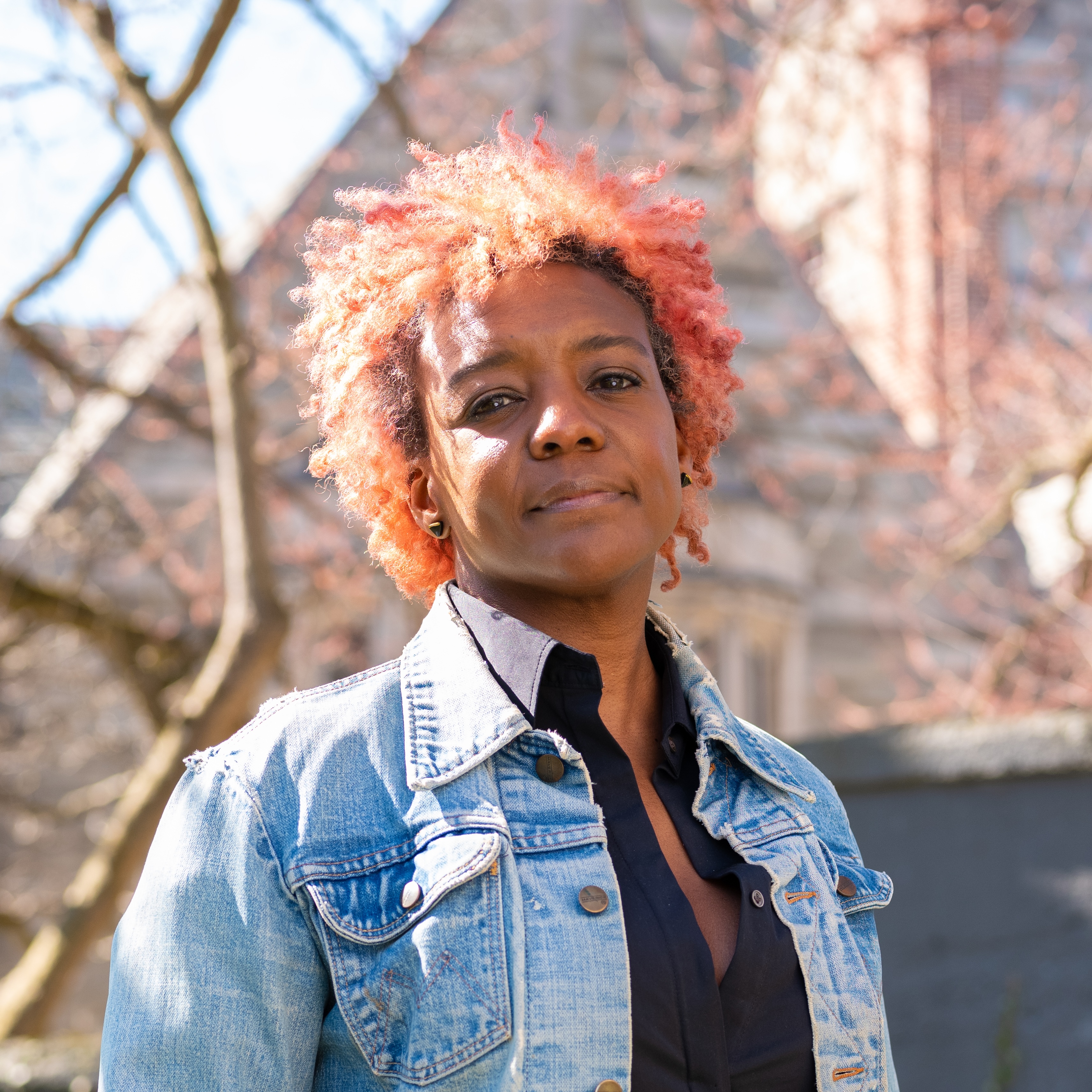Bryn Mawr College’s ARCH Project (Art Remediating Campus Histories), in partnership with Monument Lab, is proud to announce the selection of the commissioned artist, Nekisha Durrett, to create her proposed monument, Don’t Forget to Remember (Me) to address a legacy of exclusionary practices at the College and enabling the campus community to respond to the question, “What stories are missing from Bryn Mawr College?”
This vital work builds on previous and ongoing College-supported efforts by students, staff, alums, and faculty to reveal and repair harm, ensuring a reckoning with Bryn Mawr College’s history and a clear-sighted look at the way to a future of inclusion and reconciliation.
Durrett was selected after a rigorous open call for artists that saw 110 applications from 22 states and nine countries. Following five finalist proposals that were presented to campus audiences earlier this spring, Durrett’s proposal was approved by the Artist Advisory Committee, Bryn Mawr College’s President, and Board of Trustees.
 Nekisha Durrett (Born 1976 in Washington, DC; she/her/hers) is the 2022 Howard University Social Justice Consortium’s (SJC) Artist in Residence Fellow. From large freestanding sculptures to intimate gallery installations, her work uses unexpected materials to make historical connections and connotations that places and materials embody but are overlooked in our day-to-day lives. Whether reimagining pre-Colonial landscapes, bygone Black communities, or family lore, Durrett’s research-driven practice allows viewers to consider what is revealed or concealed when information is filtered across time. Her work is held in the permanent collections of The National Museum of African American History and Culture and The Phillips Collection (Washington, DC, USA).
Nekisha Durrett (Born 1976 in Washington, DC; she/her/hers) is the 2022 Howard University Social Justice Consortium’s (SJC) Artist in Residence Fellow. From large freestanding sculptures to intimate gallery installations, her work uses unexpected materials to make historical connections and connotations that places and materials embody but are overlooked in our day-to-day lives. Whether reimagining pre-Colonial landscapes, bygone Black communities, or family lore, Durrett’s research-driven practice allows viewers to consider what is revealed or concealed when information is filtered across time. Her work is held in the permanent collections of The National Museum of African American History and Culture and The Phillips Collection (Washington, DC, USA).
Follow Nekisha Durrett on Instagram, Facebook, and Twitter or visit her website to learn more about her work.

 During the 2021-2022 academic year, Monument Lab posed a central research and engagement question to the campus to guide the project:
During the 2021-2022 academic year, Monument Lab posed a central research and engagement question to the campus to guide the project:  While the engagement forms were Monument Lab’s primary mode of research collection, our findings were also informed by what the student team saw in the process of collecting research.
While the engagement forms were Monument Lab’s primary mode of research collection, our findings were also informed by what the student team saw in the process of collecting research.